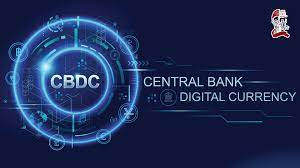BLOCKCHAIN FUNDAMENTALS
- Leonard Tajeu

- May 25, 2021
- 5 min read
The term ‘blockchain’ has become a buzzword in society today, but few can answer the question, what is blockchain?
A blockchain is a unique database. It is essentially a digital ledger of transactions. The term blockchain refers to the whole network of decentralized databases managed by multiple participants, also known as Distributed Ledger Technologies (DLT). According to the Oxford dictionary, a ledger is “a book or other collection of financial accounts of a particular type.” It can be a computer file that records transactions. A ledger is the foundation of accounting and is as old as writing and money.
Now imagine a whole suite of incorruptible digital ledgers of economic transactions that can be programmed to record and track not only financial transactions but also virtually everything of value. The blockchain can track things like medical records, land titles, and even voting. It’s a shared, distributed, and immutable ledger that records the history of transactions starting with transaction number one. It establishes trust, accountability, and transparency.

Blockchain stores information in batches called blocks. These blocks are linked together in a sequential way to form a continuous line. A chain of blocks; a blockchain. Each block is like a page of a ledger or a record book. When filled, blocks have specific storage capacities and are chained onto the previously filled block, forming a chain of data known as the “blockchain.” All new information that follows that freshly added block is compiled into a newly formed block that
will then also be added to the chain once filled. This system also inherently makes an irreversible timeline of data when implemented in a decentralized nature. When a block is filled, it is set in stone and becomes a part of this timeline.
Each block in the chain is given an exact timestamp when it is added to the chain. If you change the information recorded in one block of a blockchain, you don’t rewrite it. Instead, the change is stored in a new block. Therefore, you can’t rewrite history - no one can - because that new block shows the change as well as the date and the time of the change. This approach is based on a century-old method of the general financial ledger.
Cryptocurrencies work using blockchain technology. Blockchains such as Bitcoin and Ethereum are constantly and continually growing as blocks are being added to the chain, which significantly adds to the ledger’s security.
How Transactions are Added to the Blockchain
There are several key steps a transaction must go through before it is added to the blockchain. I will focus on authentication using cryptographic keys, authorization via proof of work, and the more recent adoption of proof of stake protocols in later blockchain networks.

Authentification: The original blockchain was designed to operate without a central authority (i.e., with no bank or regulator controlling who transacts), but transactions still have to be authenticated.
This is done using cryptographic keys, a string of data (like a password) that identifies a user and gives access to their “account” or “wallet” of value on the system.
Each user has their private key and a public key that everyone can see. Using them both creates a secure digital identity to authenticate the user via digital signatures and ‘unlocks’ the transaction they want to perform.
Authorization: Once the transaction is agreed between the users, it needs to be approved or authorized before adding it to a block in the chain.
For a public blockchain, the decision to add a transaction to the chain is made by consensus. This means that a majority of “nodes” (or computers in the network) must agree that the transaction is valid. The people who own the computers in the network are incentivized to verify transactions through rewards. This process is known as proof of work.
Proof of Work requires the people who own the computers in the network to solve a complex mathematical problem to be able to add a block to the chain. Solving the problem is known as mining, and ‘miners’ are usually rewarded for their work in cryptocurrency.
Mining isn’t easy. The mathematical problem can only be solved by trial and error, and the odds of solving the problem are about 1 in 5.9 trillion. It requires substantial computing power, which uses considerable amounts of energy. This means the rewards for undertaking the mining must outweigh the cost of the computers and the electricity cost of running them, as one computer alone would take years to find a solution to the mathematical problem.
Proof of Stake: Later blockchain networks have adopted “Proof of Stake” validation consensus protocols, where participants must have a stake in the blockchain - usually by owning some of the cryptocurrency - to be allowed in with a chance of selecting, verifying & validating transactions. This saves substantial computing power resources because no mining is required.
In addition, blockchain technologies have evolved to include “Smart Contracts,” which automatically execute transactions when certain conditions have been met.
How Blockchain Data is Stored and Secured
Blockchain works by including the identifier of the last block into the identifier in the following block to create an unbreakable and immutable chain. The question then arises, but as more and more blocks are added, how does the data remain manageable?
The key to keeping blockchain data manageable – and secure – is through an algorithm called hashing in combination with a consolidating data structure known as a Merkle Tree.
Hashing: When a transaction has been verified and needs to be added to a block in a chain, it will be put through a hash algorithm to convert it into a set of unique numbers and letters, similar to what would be created by a random password generator. Then two transaction hashes will be combined and put through the hash algorithm to produce another unique hash. This process of
combining multiple transactions into new hashes continues until finally there remains just one hash – the ‘root’ hash of several transactions.
What makes hashes unique and an essential security feature for blockchains is that they only work one way. While the same data will always produce the same hash of numbers and letters, it is impossible to ‘un-hash’ or reverse the process, using the numbers and letters to decipher the original data.
Merkle Tree: The diagram below illustrates a simplified Merkle tree:

If the hashing process is repeated with the same transactions, the same hashes will be created. This allows anyone using the blockchain to check that the data has not been tampered with because ANY change in any part of the data will result in a completely different hash, affecting every iteration of hashes all the way to the root. This is known as a Merkle Tree.
Merkle Trees serve the purpose of significantly reducing the amount of data required to be stored and transmitted or broadcast over the network by summarising sets of hashed transactions into a single root hash. As each transaction is hashed, combined, and hashed again, the final root hash will still be standard.
From a business perspective, it’s helpful to think of blockchain technology as a type of next-generation business process improvement software. Collaborative technology, such as blockchain, promises the ability to improve the business processes that occur between companies, radically lowering the “cost of trust."
Blockchains can be set up to operate in various ways, using different mechanisms to secure a consensus on transactions, seen only by authorized users, and denied to everyone else. Bitcoin is the most well-known example that shows how huge blockchain technology has become. Blockchain founders are also trying out numerous other applications to expand blockchain’s level of technology and influence. Judging by its success and increased use, it seems that
blockchain is poised to rule the digital world of the near future.
"Blockchain is as significant now as the internet was 25 years ago."
Blythe Masters: Former Executive JP Morgan Chase.



A strong random password generator is your best defense against many common cyber threats. Instead of reusing old passwords or creating simple ones, let a tool do the heavy lifting. These generators create passwords that are long, complex, and devoid of any discernible patterns, making them extremely resistant to brute-force attacks or guessing. Paired with a reliable password manager to store these unique passwords, you can significantly improve your overall online security posture. It's a small habit that makes a big difference.